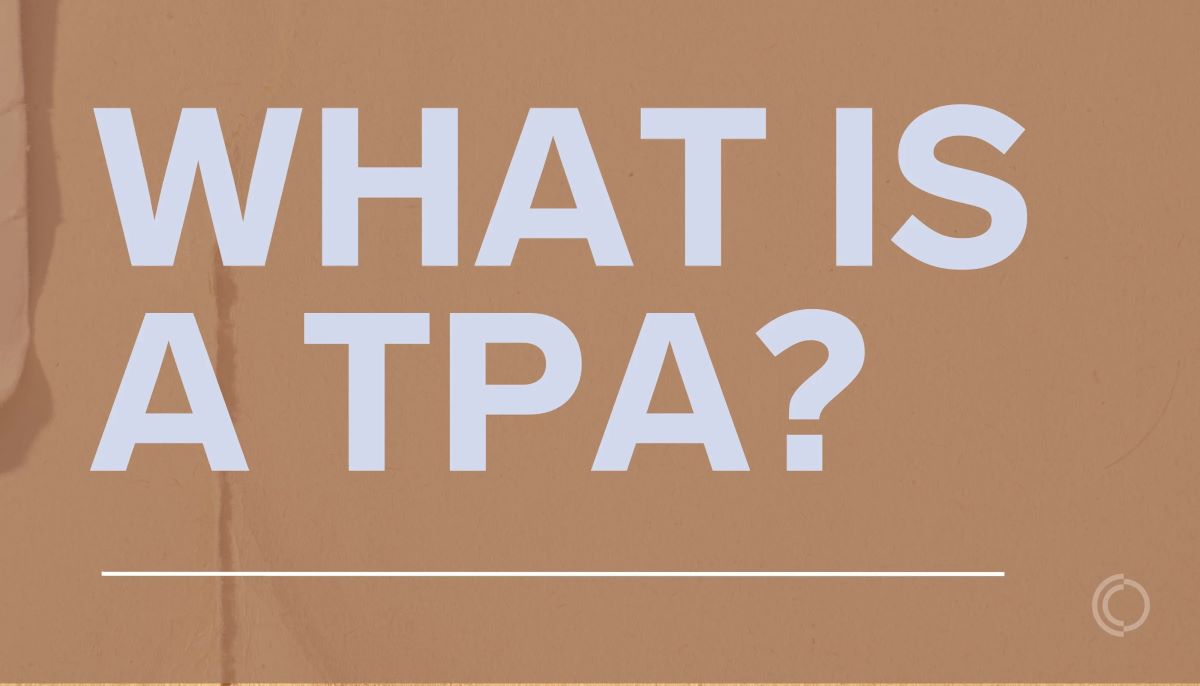

Finance
What Is A Health Insurance Stipend?
Modified: December 29, 2023
Learn what a health insurance stipend is and how it can help with your finances. Discover the benefits and options available to you.
(Many of the links in this article redirect to a specific reviewed product. Your purchase of these products through affiliate links helps to generate commission for LiveWell, at no extra cost. Learn more)
Table of Contents
- Definition of a Health Insurance Stipend
- How Does a Health Insurance Stipend Work?
- Pros and Cons of a Health Insurance Stipend
- Eligibility for a Health Insurance Stipend
- Understanding the Cost of Health Insurance Stipends
- Comparing Health Insurance Stipends to Traditional Employer-Sponsored Plans
- How to Choose the Right Health Insurance Stipend Plan
- Implementing a Health Insurance Stipend Program in the Workplace
- Conclusion
Definition of a Health Insurance Stipend
A health insurance stipend is a predetermined amount of money provided by an employer to an employee to assist with the purchase of health insurance coverage. Instead of offering a traditional employer-sponsored health insurance plan, some businesses choose to give their employees a stipend to obtain coverage independently. This arrangement allows employees to have more freedom and flexibility in selecting a health insurance plan that best meets their needs.
Unlike a traditional health insurance plan, where the employer selects and manages the coverage options, a health insurance stipend empowers employees to take control of their own healthcare decisions. With a stipend, employees can shop for insurance plans in the individual market or participate in a health insurance exchange, where they have access to a wide range of options from various insurance providers.
The stipend amount provided by the employer may vary depending on factors such as the employee’s job classification, years of service, and salary level. The goal is to provide employees with a set amount of money that they can use to offset the cost of purchasing a health insurance policy. However, it is important to note that the stipend is not additional income; it is specifically allocated for health insurance expenses.
Employers who offer health insurance stipends often do so as a way to control costs while still offering some level of support for their employees’ healthcare needs. Additionally, a health insurance stipend can be an attractive perk for job seekers, particularly those who prefer the flexibility of choosing their own insurance coverage.
Overall, a health insurance stipend provides employees with the financial means to secure health insurance coverage that aligns with their specific needs. It allows them to take control of their healthcare choices while receiving support from their employer in the form of a monetary contribution.
How Does a Health Insurance Stipend Work?
A health insurance stipend works by providing employees with a designated amount of money that they can use to purchase their own health insurance coverage. The stipend is typically provided on a regular basis, such as monthly or annually, and can be given in the form of a direct payment or a reimbursement for premiums paid by the employee.
Once an employee receives the health insurance stipend, they have the freedom to shop for an insurance plan that suits their needs. They can explore different options from various insurance providers, compare coverage and pricing, and choose the plan that best fits their budget and healthcare requirements. This allows employees to have more control and flexibility in managing their own healthcare expenses.
When selecting a health insurance plan, employees should consider factors such as deductibles, co-pays, network coverage, and prescription drug coverage. It’s important to carefully review the details of each plan to ensure it aligns with their healthcare needs and financial capabilities.
After purchasing a health insurance plan, employees may need to provide proof of coverage to their employer, who will then verify that the plan meets the required standards. This ensures that the stipend is being used for its intended purpose – to cover the cost of health insurance.
It’s important to note that health insurance stipends are typically taxable income. Both the employer and employee may have tax obligations associated with the stipend, depending on the specific regulations of the country or state. Employees should consult with a tax professional to understand the tax implications and reporting requirements related to their health insurance stipend.
Additionally, it’s essential for employees to understand that a health insurance stipend may not cover the entire cost of their insurance premiums. If the stipend amount provided by the employer is lower than the cost of the selected insurance plan, the employee is responsible for paying the difference out of pocket.
Overall, a health insurance stipend offers employees the flexibility to choose their own health insurance coverage while receiving financial support from their employer. It empowers individuals to take an active role in managing their healthcare and provides them with the opportunity to select a plan that aligns with their needs and budget.
Pros and Cons of a Health Insurance Stipend
A health insurance stipend can offer both advantages and disadvantages for both employers and employees. Understanding the pros and cons can help individuals make informed decisions about whether a health insurance stipend is the right option for them. Here are some of the key advantages and disadvantages:
Pros:
- Flexibility: One of the biggest advantages of a health insurance stipend is the flexibility it provides to employees. Instead of being limited to a specific group plan chosen by the employer, employees can explore a wide range of options and select a plan that best suits their individual needs and preferences.
- Choice: With a health insurance stipend, employees have the freedom to choose the insurance provider, plan type, and coverage level that works best for them. This allows individuals to have greater control over their healthcare decisions and customize their coverage based on their unique circumstances.
- Portability: Another benefit of a health insurance stipend is its portability. If an employee leaves their current job, they can take their stipend with them and continue to use it to purchase health insurance. This can be especially advantageous for individuals who frequently change jobs or work in non-traditional employment arrangements.
- Cost Control: For employers, offering a health insurance stipend can help control costs. Instead of bearing the expenses of a traditional group health insurance plan, employers can allocate a set amount towards each employee’s insurance, reducing their financial burden.
Cons:
- Higher Responsibility: With a health insurance stipend, employees bear more responsibility for managing their healthcare needs. They must navigate the complexities of the individual insurance market, research and compare plans, and ensure they are adequately covered.
- Administrative Challenges: Implementing a health insurance stipend program can pose administrative challenges for employers. They must establish guidelines, handle paperwork, verify coverage, and process reimbursement or direct payments, which can be time-consuming and resource-intensive.
- Potential Cost Burden: Depending on the stipend amount and the cost of individual health insurance plans, employees may end up shouldering a significant portion of the insurance expense. If the stipend is not sufficient to cover the full cost of premiums, employees may face financial strain.
- Limited Plan Selection: In some cases, the availability of plans and coverage options in the individual insurance market may be more limited compared to group plans offered by employers. Employees may have less choice when it comes to network providers or specialized coverage.
Ultimately, whether a health insurance stipend is advantageous will depend on an individual’s specific circumstances and preferences. It’s essential for both employers and employees to carefully weigh the pros and cons before implementing or opting for a health insurance stipend program.
Eligibility for a Health Insurance Stipend
The eligibility criteria for a health insurance stipend can vary depending on the policies and preferences of the employer. Typically, employers who offer a health insurance stipend will set specific requirements that employees must meet in order to qualify for the stipend. Here are some factors that may influence an employee’s eligibility:
Employment Status:
In most cases, employees must be categorized as full-time or part-time to be eligible for a health insurance stipend. The definition of full-time or part-time employment can vary, but typically, full-time employees work a set number of hours per week as defined by the employer.
Job Classification:
Employers may restrict eligibility based on job classification. For example, certain job roles or positions may be excluded from receiving a health insurance stipend. This could include temporary employees, interns, or independent contractors.
Length of Service:
Some employers may have a minimum employment tenure requirement for eligibility. For example, employees may need to have completed a certain number of months or years of service with the company to be eligible for the health insurance stipend.
Salary Level:
Employers may set a minimum salary threshold for eligibility. Typically, this is to ensure that the stipend is distributed to employees who are earning a certain level of income. The purpose is to target the stipend towards those who may need financial assistance with health insurance costs.
Other Requirements:
In addition to the above factors, employers may have additional requirements for eligibility, such as enrolling in a qualifying health insurance plan, providing proof of coverage, or meeting certain participation guidelines.
It’s important for employees to familiarize themselves with their employer’s specific eligibility criteria for the health insurance stipend program. Human resources departments or benefits administrators within the organization can provide detailed information regarding eligibility requirements and any supporting documentation that may be needed.
Employees should also be aware that eligibility for a health insurance stipend does not guarantee coverage or dictate the amount of the stipend. The actual stipend amount provided may be determined based on factors such as the employer’s budgetary constraints or a tiered structure based on job classification or salary level.
Overall, eligibility for a health insurance stipend will depend on various factors specific to each employer. Understanding the eligibility criteria and requirements is essential for employees to determine whether they can take advantage of this benefit.
Understanding the Cost of Health Insurance Stipends
When it comes to health insurance stipends, both employers and employees need to have a clear understanding of the associated costs. This includes considerations such as the stipend amount itself, the tax implications, and potential out-of-pocket expenses for employees. Here’s a breakdown of the key factors to consider when it comes to the cost of health insurance stipends:
Stipend Amount:
The stipend amount provided by an employer can vary depending on various factors, such as the employee’s job classification, salary level, and years of service. Employers often set a predetermined amount that employees can use towards their health insurance, providing financial assistance in covering the cost of premiums.
Tax Implications:
It’s important to understand the tax implications of receiving a health insurance stipend. In many cases, the stipend is considered taxable income for the employee, meaning it will be subject to federal, state, and local income taxes, as well as Social Security and Medicare taxes. Employers may also have additional tax obligations associated with providing health insurance stipends, and they should consult tax professionals to ensure compliance with relevant regulations.
Out-of-Pocket Expenses:
Employees should be aware that the stipend amount provided by the employer may not cover the entire cost of their insurance premiums. If the stipend is lower than the cost of their selected insurance plan, employees may need to pay the remaining amount out of pocket. This could include expenses such as deductibles, co-pays, and out-of-network charges. It’s crucial for employees to carefully review the terms and conditions of their insurance plans to understand the potential out-of-pocket expenses they may incur.
Additional Coverage Considerations:
Employees should also consider additional coverage needs beyond the stipend amount provided. This may include coverage for dependents, such as spouses or children, as well as options for dental, vision, or prescription drug coverage. Depending on the stipend amount and the specific insurance plan, employees may need to budget for these additional coverage options separately.
Marketplace Comparison:
Employees should take the time to compare different health insurance plans available in the marketplace to find the best coverage at the most affordable price. By researching and comparing plans, employees can get a better understanding of the costs associated with their desired level of coverage and make an informed decision that fits their budget.
Ultimately, understanding the cost of health insurance stipends involves considering the stipend amount, tax implications, potential out-of-pocket expenses, additional coverage needs, and marketplace comparison. By taking these factors into account, both employers and employees can navigate the cost aspects associated with health insurance stipends effectively.
Comparing Health Insurance Stipends to Traditional Employer-Sponsored Plans
When considering health insurance options, it’s important to understand the differences between health insurance stipends and traditional employer-sponsored plans. Both options have their own advantages and disadvantages, and comparing them can help individuals make more informed decisions. Here are some key points to consider when comparing health insurance stipends to traditional employer-sponsored plans:
Choice and Flexibility:
One of the biggest differences between health insurance stipends and traditional employer-sponsored plans is the level of choice and flexibility they offer. With a stipend, employees have the freedom to select their own insurance plan from a wide range of options available in the individual market. This provides greater customization and control over coverage. In contrast, traditional employer-sponsored plans typically offer a limited selection of plan options chosen by the employer. While this may provide less choice, it simplifies the decision-making process for employees.
Cost Considerations:
Cost is another key factor to consider when comparing health insurance stipends and traditional employer-sponsored plans. With a stipend, employees receive a set amount of money to use towards their health insurance premiums. The stipend may cover some or all of the premium costs, depending on the plan selected and the stipend amount. In traditional employer-sponsored plans, the employer typically contributes a significant portion of the premium costs, reducing the financial burden for employees. However, it’s important to note that employees may still be required to pay a portion of the premiums through payroll deductions or contributions.
Administrative Responsibilities:
Health insurance stipends and traditional employer-sponsored plans also differ in terms of administrative responsibilities. With a stipend, employees take on more responsibility for managing their own insurance, including researching and selecting plans, making premium payments, and coordinating with insurance providers. In contrast, traditional employer-sponsored plans are managed by the employer, who selects the plans, handles the paperwork, and manages the enrollment process. This can be advantageous for employees who prefer a more hands-off approach and don’t want the added administrative tasks associated with a stipend.
Coverage and Network:
Both health insurance stipends and traditional employer-sponsored plans offer varying levels of coverage and access to healthcare networks. Stipends allow for more customization in terms of plan selection, allowing employees to choose a plan that aligns with their specific healthcare needs and preferred network of doctors and hospitals. Traditional employer-sponsored plans may have a predetermined network of providers, but they often offer comprehensive coverage options and may have negotiated rates with healthcare providers, resulting in potential cost savings for employees.
Portability:
Another important consideration is portability. Health insurance stipends offer more portability, as employees can take their stipend with them if they leave their current job and use it to purchase coverage elsewhere. Traditional employer-sponsored plans are typically tied to employment and may not be portable, meaning employees may lose coverage if they change jobs.
Ultimately, the choice between a health insurance stipend and a traditional employer-sponsored plan depends on an individual’s preferences, budget, and healthcare needs. Carefully considering the factors mentioned above can help individuals navigate the pros and cons of each option and make the best decision for their specific circumstances.
How to Choose the Right Health Insurance Stipend Plan
Choosing the right health insurance stipend plan requires careful consideration and evaluation of various factors. Here are some key steps to help you make an informed decision:
Assess Your Healthcare Needs:
Start by assessing your healthcare needs and those of your dependents, if applicable. Consider factors such as your current health status, any pre-existing conditions, medications you take, and the frequency of medical visits. This evaluation will give you a better understanding of the specific coverage and benefits you require from a health insurance plan.
Evaluate Available Options:
Research and evaluate the different health insurance options available in the marketplace. Look for insurance providers or health insurance exchanges that offer plans compatible with health insurance stipends. Review the coverage details, including deductibles, co-pays, coinsurance, and out-of-pocket maximums. Consider the network of healthcare providers and any restrictions, such as the need for referrals or prior authorization.
Compare Costs:
Compare the costs associated with each health insurance stipend plan. Consider the stipend amount provided by your employer and any out-of-pocket expenses you may be responsible for. Evaluate the premiums, deductibles, co-pays, and coinsurance amounts for each plan. Additionally, consider the potential costs of prescription medications, specialist visits, and other healthcare services that may be important to you.
Consider Provider Networks:
Take into account the provider networks associated with each health insurance plan. Ensure that the plan includes your preferred healthcare providers, specialists, and hospitals. If you have an existing relationship with certain healthcare professionals, it’s important to verify their participation in the network associated with the plan you are considering.
Review Plan Flexibility:
Consider the flexibility of each health insurance stipend plan. Determine if you have the freedom to choose any medical provider or if you are restricted to a specific network. Assess if the plan allows for out-of-network coverage in case you require healthcare services from providers outside the network.
Examine Additional Benefits:
Look beyond the core coverage and consider any additional benefits offered by each health insurance stipend plan. Some plans may include dental, vision, or prescription drug coverage, which can be valuable depending on your specific needs.
Seek Expert Advice:
If you feel overwhelmed or uncertain about selecting the right health insurance stipend plan, consider seeking advice from professionals, such as insurance brokers or financial advisors. They can help assess your unique situation and guide you towards the most suitable options.
Review Plan Documents:
Before making a final decision, thoroughly review the plan documents, including the Summary of Benefits and Coverage (SBC) and the plan’s terms and conditions. This will provide you with detailed information about the plan’s coverage, limitations, and any exclusions you should be aware of.
By following these steps, you can make a well-informed decision and choose the right health insurance stipend plan that aligns with your healthcare needs, budget, and priorities.
Implementing a Health Insurance Stipend Program in the Workplace
Implementing a health insurance stipend program in the workplace can be a beneficial option for both employers and employees. Here are some key steps to consider when implementing a health insurance stipend program:
Evaluate Employer Goals:
Begin by evaluating the goals and objectives of implementing a health insurance stipend program. Consider factors such as cost control, employee satisfaction, attracting and retaining talent, and providing employees with more choice and flexibility in their healthcare decisions.
Research Provider Options:
Research different health insurance providers or health insurance exchanges that offer options compatible with health insurance stipend programs. Look for providers that offer a variety of plans to cater to different employee needs and preferences.
Define Stipend Amount:
Determine the stipend amount that will be provided to employees. This should be based on factors such as budgetary considerations, average cost of insurance plans in the market, and the level of financial assistance you wish to provide to your employees.
Establish Eligibility Criteria:
Define the eligibility criteria for employees to qualify for the health insurance stipend program. Consider factors such as employment status (full-time or part-time), length of service, and job classification.
Create Communication Plan:
Develop a clear and concise communication plan to educate employees about the new health insurance stipend program. Clearly communicate the program’s purpose, eligibility criteria, stipend amount, enrollment process, and key deadlines. Provide employees with resources, such as brochures or online portals, to help them understand their options and make informed decisions.
Provide Support and Resources:
Support employees in navigating the process of selecting and enrolling in a health insurance plan. Provide them with access to resources such as insurance brokers or online tools that can assist them in understanding and comparing different plan options. Offer guidance on how to evaluate coverage, networks, and costs to help them make educated decisions.
Coordinate with Insurance Providers:
Coordinate with the chosen insurance providers or health insurance exchange to ensure a seamless enrollment and payment process. Establish a system for verifying coverage and collecting proof of insurance from employees participating in the health insurance stipend program.
Regularly Review and Update:
Continuously evaluate the effectiveness of the health insurance stipend program. Solicit feedback from employees to understand their satisfaction levels and identify areas for improvement. Regularly review the stipend amount to ensure it aligns with the current market rates and employees’ healthcare needs.
Implementing a health insurance stipend program can provide employees with more choices and flexibility while allowing employers to control costs. By following these steps, employers can effectively implement a health insurance stipend program that meets the needs of both the organization and its employees.
Conclusion
A health insurance stipend can be an attractive alternative to traditional employer-sponsored health insurance plans, offering both employers and employees a range of benefits and considerations. By understanding the key aspects of health insurance stipends, individuals can make informed decisions about their healthcare coverage.
Health insurance stipends provide employees with flexibility and control over their healthcare choices. They have the freedom to shop for insurance plans that best meet their needs and preferences, selecting coverage options from a wide range of providers. This empowers individuals to customize their coverage based on their unique circumstances.
Employers, on the other hand, benefit from health insurance stipends by controlling costs and offering a valuable benefit to employees. By providing a stipend rather than a traditional employer-sponsored plan, employers can potentially reduce their financial burden while still supporting their employees’ healthcare needs.
However, it’s important for both employees and employers to carefully evaluate the pros and cons of health insurance stipends. Considerations such as eligibility criteria, costs, administrative responsibilities, and coverage options should all be taken into account when deciding on the most suitable option.
Implementing a health insurance stipend program in the workplace requires careful planning and communication. Employers should ensure that employees understand the program, its eligibility criteria, and the resources available to them in selecting an appropriate health insurance plan.
In conclusion, health insurance stipends offer a flexible and customizable approach to healthcare coverage. They provide employees with the freedom to choose their own plans while allowing employers to control costs. By understanding the specific needs and preferences of both employees and employers, health insurance stipends can be an effective and beneficial option for all parties involved.














